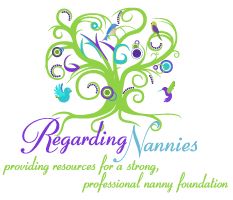
by Tonya Sakowicz
Baby Go Green, INC.
As a parent or a nanny, the thought of all the things that go into setting up a green nursery can be quite intimidating and is one of the main reasons people seek out the services of a Greenproofer like me. There are many components to a green nursery that never even occur to the average person. We are going to look at those components in this segment.
The very first thing to examine is the air quality in the room. Since the average newborn can spend up to 20 hours per day sleeping in their nursery, the air they breath is critical to their overall health.
- Is there a window that can be opened frequently to let in fresh air? Exchanging stale or contaminated air as often as possible will reduce the toxic exposure of your baby or charge.
- Is there a good ventilation system in the house with particle reducing air filters to minimize the contaminants that are coming into the room? Keeping filters changed as recommended can go a long way in reducing toxins.
- Have all the ‘new’ baby products been unwrapped, opened and off-gassed, preferably outside? New products, particularly those made from plastics, tend to give off a lot of chemical pollution into the air and should be opened long before babies arrival and allowed to off-gas these chemicals. It is ideal if you can do this outside, away from a pregnant Mom or other children.
- Any new paint, wallpaper, carpeting, fabrics, etc… should be installed well in advance of babies arrival for the same reason.
The second thing I look at are the major components of the room in terms of decor and furnishings. From paint to bedding, each item needs to be considered from a green standpoint and the goals of the parents. Primarily our focus is in what is healthiest for baby, but many clients are also concerned that the products used are Eco-friendly and fair trade.
- Flooring is a good place to start: will they be replacing the flooring or using the existing flooring? If they are keeping the carpeting that is already in the room, for example, they will want to have it cleaned by a company that uses non-toxic cleaning products. If they are replacing it, they will need to not only consider what the carpeting is made from and treated with, but also if it is applied with glue, is the glue low VOC and non-toxic. The same goes for wood, vinyl and other flooring options.
- The walls: will they be painting, wall papering or something else? Again, no VOC or low VOC options are the safest choice, but questions need to asked. For example, many companies advertise that they have no VOC paint, and while that may be true, only a few have no or low VOC colorants. In other words, the paint is no VOC, but the pigments used to create your color may not be! This is a deceptive (and currently legal) form of advertising to capitalize on the green movement called green washing.
- Fabrics and window coverings are another thing that is often replaced with the arrival of a new baby. Organic fabric choices, vegetable-based dyes and minimizing “folds” in fabrics such as curtains all reduce toxic exposure. Often times, wood blinds with non-toxic finishes are a safer choice.
- The furniture, crib mattress and decor are often a big decision for new parents. Looking for hardwood, quality pieces with non-toxic finishes is important. It is also a good idea to look at the longevity of a piece…purchasing a dresser that can be made into a changing table and used for the life of the child has a much more positive impact on the environment, for example, than a specialized changing table that is discarded after only a year or two of use.
- Everyone loves to buy toys, blankets and clothing for new babies! Registering for organic blankets, non-toxic toys and organic, fair trade clothing can go a long way in reducing the toxins a new baby is exposed to and most major stores, along with speciality retailers, both online and in stores carry a greater and greater variety of these options.
- As we become more and more aware of the large number of toxic chemicals used in both baby and adult personal care and cleaning products, it is important to really examine what we are putting onto and around babies bodies. The Environmental Working Group has a great resource called the Cosmetics Database which examines and catalogues thousands of personal care products and ranks them for toxicity and safety. Check out any products there before buying or using them on a baby.
If you are the one asked to help set up a green nursery, knowing as much as you can about each of these areas or seeking out the help of a certified professional is a critical part of the process. Knowing that you are part of helping create a safer environment for a new baby can be a fun and rewarding experience with benefits that carry on to the next generation.
